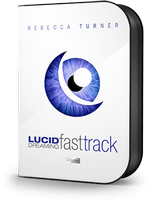10 Steps to Lucid Dreams
Step #4: How to Relax So Deeply You Can't Feel Your Body
Forget sensory deprivation tanks. Today you're going to learn how to shut off all physical sensory input and "fall asleep consciously".
Don't worry, it's completely safe. It's even quite easy once you get the knack for it.
And it leads directly to the most vivid, on-demand lucid dreams.
The beauty of relaxing like this is you can practice it any time or day or night. However it's most effective in the early hours of the morning, after you've had five or so hours of sleep.
It doesn't take any energy. It relieves stress. And it feels really good.
How Do You Relax?
Some people think relaxation involves a glass of wine. Maybe a take out dinner. Probably slouching on the couch watching an evening of TV. If you're lucky - an amazing back massage from your partner.
This kind of relaxation goes way deeper than any of that.
I'm talking about complete physical and mental detachment from the real world.
This state of relaxation is a springboard to achieving deeper states of meditation and, ultimately, conscious entry into the lucid dream world.
When you feel like relaxing, lie down on your back in a dark, quiet room.
Take some deep breaths in and out... and start to feel the tension drain away from your muscles...
Begin with Physical Relaxation
Begin by systematically visualizing each muscle group and letting it relax into the bed, or go invisible, or float away. Whichever metaphor works for you.
Start with your toes: let them drop out of reality. Then your feet. Then your ankles. Focus your full attention on each body part and let it go before moving up... all the way to the top of your head. Remember to fully relax your face and jaw.
As you do this, sigh away the tension and allow your breathing to become gentle and rhythmic. Once a body part has "left reality" don't move it; it's gone.
(If you must move to cough or scratch an itch, start over until you feel you're back to where you were before.)
This should take about 10 minutes, by which point you'll be feeling pretty relaxed. Yet this is only the beginning.
Advance with Mental Relaxation
Start with observing your hypnagogic imagery - those floating or swirling patterns which form against your closed eyelids when you're tired.
Let it take your focus away from your physical body... into a primitive yet hypnotic dream world.
If your body is relaxed but you don't see any emerging hypnagogia, do some sensory visualization instead:
Imagine your arms or legs have completely disappeared. What does that feel like?
Imagine you're floating a few feet above your body, or are trying to sway your awareness out of it, like you're on a swing at the park. Feel the imagined sensation.
After another 10 minutes, you should be deep in a state of total relaxation.
- Your body is so relaxed... it sends few (if any) real sensory signals to your brain. This makes it easy for you to create false signals with your mind. Any physical sensation you imagine now can feel very real - and can even tip you into the lucid dream world.
- Your mind is focused inwards... far away from the trivial stresses of waking life. You may keep your mind clear and open to spontaneous insights - or visualize a simulated inner world which again can lead you into a lucid dream in a matter of seconds.
What If You Can't Relax?
The most common hurdle beginners face with this technique is silencing their inner monologue. Most people just don't know how to switch off their overactive brains.
There are lots of ways to distract yourself from your inner voice, and eventually it will go quiet on its own, just as you fall asleep without it every night.
One simple trick is to count slowly backwards in your mind in threes, starting from one hundred.
Another tactic is to focus on your slow breathing, and every time your inner voice chimes in with a distracting thought, quickly sweep it away.
Crucially, your aim is to fall asleep physically (shut down the sensory signals) but remain awake mentally (stay conscious as a dream scene emerges).
If that sounds alien at this stage, you're not alone. Falling asleep consciously usually takes practice and determination, but you will master it as a lucid dreamer.
For the next few nights, go to bed a little earlier than usual and perform this technique as practice. Do it again any time you wake up in the night (it's easier to induce a lucid dream then too). Open yourself up to a blissful meditation experience... and maybe even some surprising dream onset phenomena.
Best wishes
Rebecca
Jump in With Both Feet
These tutorials are just a taster, so you can see what's involved. I have a lot more in-depth advice to share with you. So when you're ready to jump in with both feet, I recommend you sign up to my complete home study course, the World of Lucid Dreaming Academy.
This interactive course offers 30 detailed tutorials to help you induce lucid dreams and unlock powerful skills in dream control. You won't regret learning this amazing skill - and I offer a 100% refund guarantee if you don't start lucid dreaming out of it.
Not Yet Subscribed?
